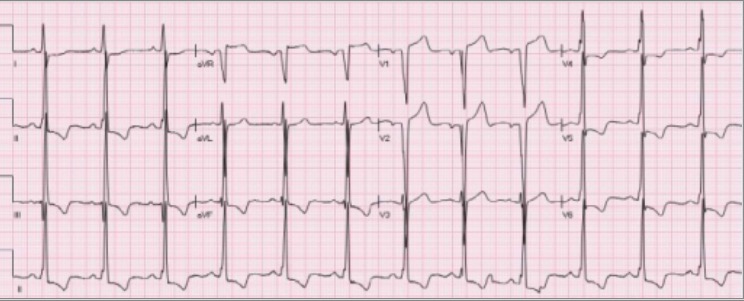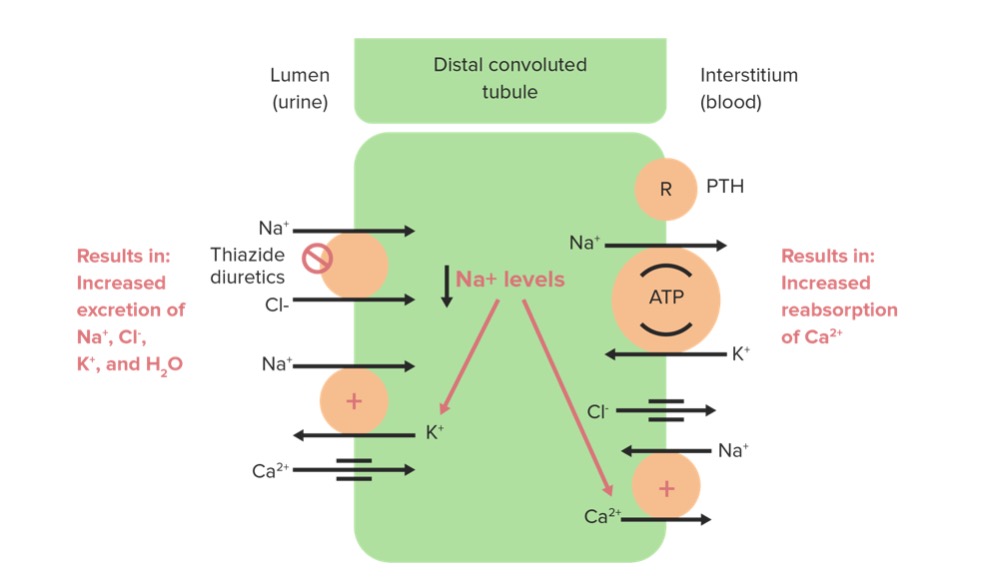Playlist
Show Playlist
Hide Playlist
Primary and Secondary Hypertension (JNC 8 Guidelines)
-
Slides Hypertension.pdf
-
process of diagnosis - hypercortisolism.pdf
-
Download Lecture Overview
00:01 As you very well know, there is a continuous association between high blood pressure and cardiovascular disease. 00:07 In an attempt to classify the different stages of high blood pressure, the American College of Cardiology and the American Heart Association Task force published new guidelines in 2017 that are different from the JNC 7 report. 00:22 According to the current recommendations normal blood pressure is defined as systolic blood pressure lower than 120 milimeter Hg and diastolic blood pressure lower than 80 milimeter Hg. 00:35 Blood pressure is considered elevated when the systolic pressure is 120-129 milimeter Hg and the diastolic pressure lower than 80 milimeter Hg. 00:46 Any values above 130/80 milimeter Hg are considered hypertension - in contrast with the previous guidelines that defined hypertension as blood pressure greater than 140/90 milimeter Hg. 01:00 The idea behind this new categorization rests on multiple studies that suggest that there is increased risk for cardiovascular and cerebrovascular disease in levels lower than 140/90 milimeter Hg. 01:14 This, of course, doesn’t necessarily mean that people with elevated blood pressure or stage 1 hypertension will receive pharmacotherapy. 01:22 This classification suggests that these individuals are at increased risk for adverse outcomes due to high levels of blood pressure and would benefit from appropriate lifestyle - and, if necessary, pharmacologic - interventions. 01:38 So, primary is what we talk about. What does primary mean to you? It is a fact that your focus should be on sodium. Why? Because if sodium comes in and you are retaining it, then what are you going to do with the volume? You are going to retain that as well. 01:51 You retain your volume and so therefore you increased the amount of fluid or preload in the heart and what is this relationshop called? Called Frank-Starling relationship. 02:00 What are you going to an increase when you have increase in volume within the heart? The force of contraction at the left ventricle during systole, the active phase of the cardiac cycle. 02:09 Systolic blood pressure is the pressure in the arteries during systole. 02:13 Could diastole also be affected? Of course, with the diastolic pressure, you're looking at the pressure of the arteries during diastole, the relaxation phase of the cardiac cycle. 02:24 Let us go onto secondary, what does that mean? We're looking at an underlying issue in which now the patient has developed secondary hypertension and we shall go through the most common causes of secondary. 02:37 We will walk through the pathogenesis so that you understand what is going on with your patient. 02:42 Onset, prior to age of 30, we'll talk about this being bimodal and this will make sense to you as you move on. 02:47 Secondary change in hypertension, what does that mean? Well, once again as I said we are looking for underlying cause. 02:53 For all patients. 02:54 Obesity and alcohol use should be addressed as a risk factor for hypertension, along with discussions about healthy diet, regular exercise and weight loss to maintain a body mass index below 25 or a level reasonable for the individual. 03:07 Why not recommend your patient to lose weight and when they do so, Why not recommend your patient to lose weight and when they do so, you should be able to knock out a few things at the same times. 03:15 You should maybe take care of that hyperglycemia. 03:17 Maybe, just maybe, you are increasing the sensitivity of the insulin receptors. 03:22 Welcome to management of diabetes. 03:25 Maybe by controlling the diet, you should be able to control the lipid and also by losing weight, you should be able to control some of this hypertension. 03:33 Atherosclerosis, secondary hypertension. 03:36 What does atherosclerosis mean? Accumulation of lipid. 03:40 Where might this be taking place? It might be taking place in the renal vasculature. 03:44 Right? We will get into this in a second. 03:46 You will see as to how if there is a blockage to the renal vasculature that it may result in secondary hypertension, males, alcohol abuse. 03:55 What about female? What about renovascular disease? What particular renovascular disease should come to mind when you're thinking about a female? A young female, 30's perhaps. 04:05 You're thinking about something called fibromuscular dysplasia. 04:09 I'll talk about this in a second, what's our topic? secondary hypertension. 04:12 Elderly, without history of prior hypertension, consider atherosclerosis, you must. 04:17 Atherosclerosis is something, from the day that we're born, we pretty much are developing fatty streaks, aren't we? You are what you eat. 04:25 And this is so incredibly true when you are talking about hypertension. 04:29 Atherosclerosis, what if it took place in renal artery? Now let me give you a little bit of a preface as to what is to come. 04:36 Meaning what, you decrease the amount of blood flow to your blood vessels. 04:40 Where? In the glomerulus. 04:43 Are you there? Picture the afferent please and picture the efferent. 04:46 I want you to focus upon the afferent arteriole. 04:49 Would you tell me what vasculature or blood vessel is proximal to the afferent arteriole? I believe it is renal artery, wow. 04:58 That is a huge blood vessel undergoing atherosclerosis, a decrease of blood vessel. 05:02 What then happens at juxtaglomerular apparatus? It becomes very, very active, doesn't it? It doesn't like the fact that it's receiveing decreased perfusion. 05:10 What are you going to release? Renin and company. 05:13 What do you mean renin and company? Welcome to RAS, Renin-Angiotensin-Aldosterone system. 05:18 So as you we move through here, we will then take a look at the RAS sytstem in greater detail. 05:22 What's my topic? Secondary hypertension , different patients presenting with most common diseases.
About the Lecture
The lecture Primary and Secondary Hypertension (JNC 8 Guidelines) by Carlo Raj, MD is from the course Hypertension: Basic Principles with Carlo Raj.
Included Quiz Questions
Which of the following statements is TRUE regarding primary hypertension?
- One of the recommendations for management is limiting sodium intake.
- It leads to secondary hypertension.
- The etiologies are well known.
- Preload is decreased.
- Antihypertensive medications are the only way of managing primary hypertension.
Which of the following statements is FALSE regarding secondary hypertension?
- The onset is usually after age 30 but before the age of 55.
- The onset before age 30 is suggestive of secondary hypertension.
- It may present as accelerated hypertension with signs of end-organ damage.
- Atherosclerosis of the renal arteries is the most common cause of secondary hypertension in the elderly.
- Oral contraceptives can contribute to the development of secondary hypertension in women.
Which of the following is associated with hypertension in women under age 30?
- Fibromuscular dysplasia
- Renal artery atherosclerosis
- Fibromyalgia
- Systemic lupus erythematosus
- Polycystic kidney disease
Customer reviews
3,4 of 5 stars
| 5 Stars |
|
6 |
| 4 Stars |
|
0 |
| 3 Stars |
|
0 |
| 2 Stars |
|
0 |
| 1 Star |
|
4 |
Best professor I've come across on lecturio. He makes the subject so much fun
Love this lecturer. He helps you look at the topic from several different angles.
His unique style keeps my mind engaged. He reinforces other concepts and paints a picture of the clinical presentation.
Outstanding lecture presentation. Very high yield information, excellently presented. Wonderful instructor character.





